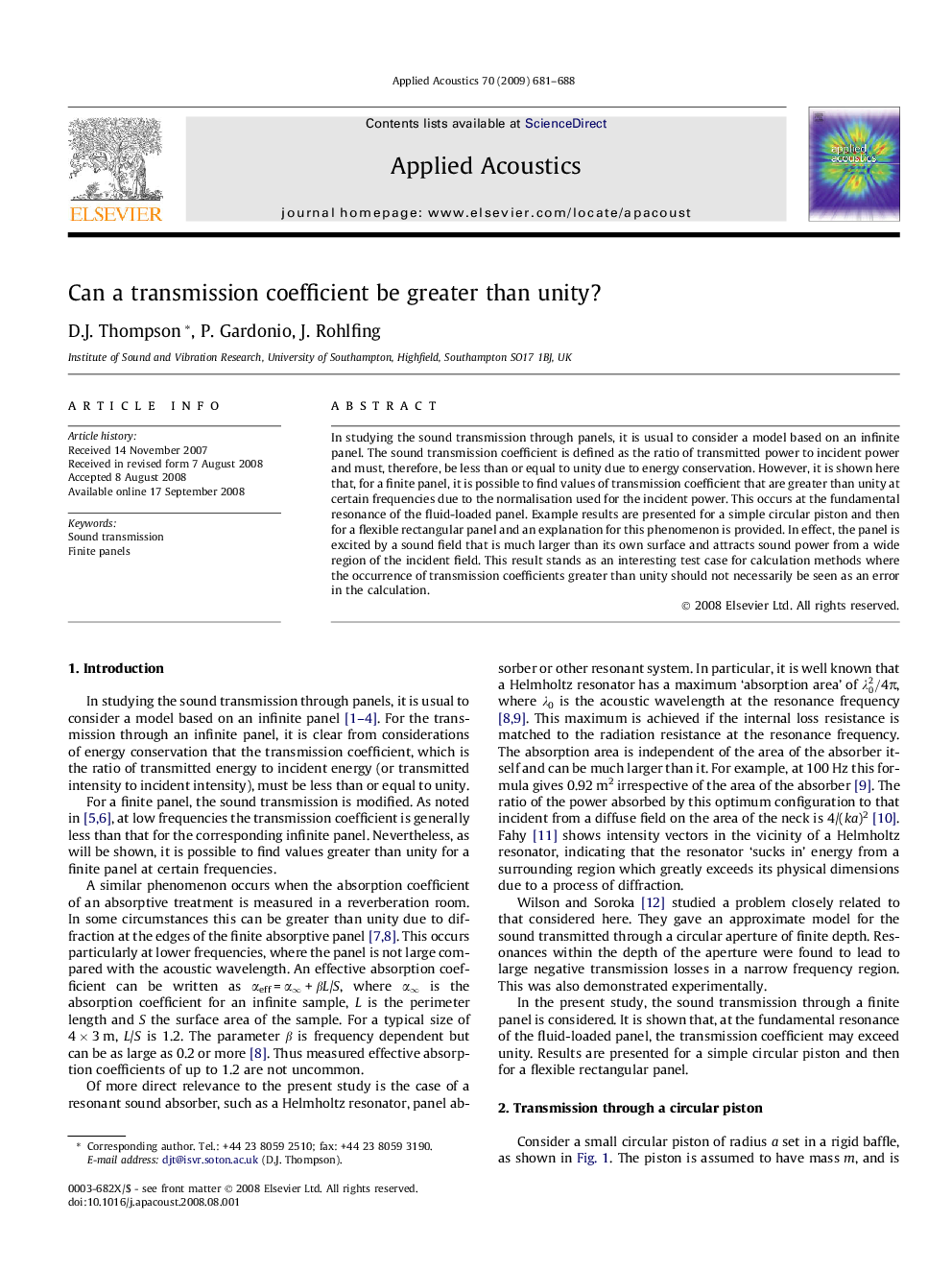| Article ID | Journal | Published Year | Pages | File Type |
|---|---|---|---|---|
| 754698 | Applied Acoustics | 2009 | 8 Pages |
In studying the sound transmission through panels, it is usual to consider a model based on an infinite panel. The sound transmission coefficient is defined as the ratio of transmitted power to incident power and must, therefore, be less than or equal to unity due to energy conservation. However, it is shown here that, for a finite panel, it is possible to find values of transmission coefficient that are greater than unity at certain frequencies due to the normalisation used for the incident power. This occurs at the fundamental resonance of the fluid-loaded panel. Example results are presented for a simple circular piston and then for a flexible rectangular panel and an explanation for this phenomenon is provided. In effect, the panel is excited by a sound field that is much larger than its own surface and attracts sound power from a wide region of the incident field. This result stands as an interesting test case for calculation methods where the occurrence of transmission coefficients greater than unity should not necessarily be seen as an error in the calculation.
